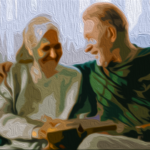
Bitcoin's Market Dominance and Potential
Bitcoin (BTC), the leading cryptocurrency by market cap, has garnered significant attention in the digital currency realm due to its robustness and market dominance. Currently, its value hovers just below the $34,000 mark. As per the latest bitcoin price prediction report from finder.com, industry specialists provide insights into anticipated future developments.
Experts' Forecasts for Bitcoin's Future Prices
The report, titled "Bitcoin to Hit $87,000 by 2025," delves into bitcoin's potential price trajectories by synthesizing opinions from 31 experts and panelists within the sector. The panelists discuss the possibility of a spot bitcoin exchange-traded fund (ETF) receiving approval. Surprisingly, 47% of these experts believe that such an endorsement could propel bitcoin to unprecedented highs. Additionally, around 60% of participants anticipate the approval of a spot bitcoin ETF by 2024.
Consensus on Bitcoin's Value
Based on the survey, the consensus among the experts suggests that BTC's value will reach $30,000 per unit by the end of 2023. It is expected to surpass its all-time high of $69,000 and achieve a value of $87,000 by 2025. Mitesh Shah, the founder of Omnia Markets, projects that BTC will end the year at $35,000 and reach $105,000 by 2025. Shah represents the 20% of surveyed individuals who anticipate an ETF's approval within the current year. "There is a growing consensus that the SEC will eventually approve a bitcoin ETF, with Blackrock's application being the most likely candidate," Shah commented.
The CEO of Omnia further added, "The approval of any bitcoin ETF would open the floodgates for institutional investment, and the announcement of such approval would likely result in an immediate spike in bitcoin's price."
The Significance of the 2024 BTC Halving Event
The report highlights the impending 2024 BTC halving event as a critical juncture in bitcoin's chronology. 57% of Finder's experts forecast a moderate appreciation in bitcoin's price in the months leading up to the event. This prediction aligns with the historical trend where bitcoin's value typically experiences an upswing after halving events due to the reduced rate of new BTC entering circulation. Damian Chmiel, the senior analyst and editor at Finance Magnates, predicts that BTC will settle at $30,000 this year and reach $50,000 by 2025.
"Next year's halving could be an event that shifts the balance of power in favor of bitcoin. I still believe that the digital asset will ultimately reach new all-time highs and attain a six-figure value," Chmiel expressed. While 57% of experts predict a moderate increase before the halving, 30% anticipate a more significant upswing, and 3% foresee no price fluctuation prior to the event. The report also delves into bitcoin's global influence, underscoring its status as a market forerunner and its impact on the broader financial landscape.
Varied Perspectives on Bitcoin's Future
Desmond Marshall, the managing director at Rouge International and Rouge Ventures, offers a less optimistic outlook compared to many of his contemporaries. He attributes his bearish forecast to recent regulatory clampdowns by SEC chairman Gary Gensler and "rumors of a recession." Marshall predicts that bitcoin's value will be $35,000 by 2025, aligning with its current price trajectory this past week.
"BTC is still the strongest crypto of all, so I don't think the dip will be as hard as other tokens," Marshall said. "The halving timeline should increase it a bit, but the human interference of U.S. policies will block it from going to the moon."
Finder's Cautious Stance and Recommendations
Interestingly, this latest report from Finder takes a more cautious stance compared to its predecessors published last year, where some experts projected six-figure BTC valuations. In conclusion, the report states that 66% of Finder's 31 fintech and crypto specialists believe that the present moment is opportune for acquiring BTC, while 24% advocate for maintaining current holdings. Approximately 10% of the experts recommend selling BTC at this juncture.
What do you think about Finder's latest report on bitcoin's future price? Share your thoughts and opinions in the comments section below.
Frequently Asked Questions
Can I keep a Gold ETF in a Roth IRA
A 401(k) plan may not offer this option, but you should consider other options, such as an Individual Retirement Account (IRA).
Traditional IRAs allow for contributions from both employees and employers. You can also invest in publicly traded businesses by creating an Employee Stock Ownership Plan (ESOP).
An ESOP gives employees tax advantages as they share the stock of the company and the profits it makes. The money you invest in the ESOP will be taxed at a lower rate than if it were directly held by the employee.
You can also get an Individual Retirement Annuity, or IRA. You can make regular payments to your IRA throughout your life, and you will also receive income when you retire. Contributions made to IRAs are not taxable.
How to Open a Precious Metal IRA
The first step in opening an Individual Retirement Account, (IRA), is to decide if it's something you want. You must complete Form 8606 to open an account. Then you must fill out Form 5204 to determine what type of IRA you are eligible for. This form should not be completed more than 60 days after the account is opened. Once this is done, you can start investing. You could also opt to make a contribution directly from your paycheck by using payroll deduction.
You must complete Form 8903 if you choose a Roth IRA. Otherwise, the process will be identical to an ordinary IRA.
To be eligible for a precious metals IRA, you will need to meet certain requirements. The IRS says you must be 18 years old and have earned income. Your earnings cannot exceed $110,000 per year ($220,000 if married and filing jointly) for any single tax year. Contributions must be made on a regular basis. These rules apply to contributions made directly or through employer sponsorship.
An IRA for precious metals allows you to invest in gold and silver as well as platinum, rhodium, and even platinum. But, you'll only be able to purchase physical bullion. You won't have the ability to trade stocks or bonds.
You can also use your precious metals IRA to invest directly in companies that deal in precious metals. This option may be offered by some IRA providers.
There are two major drawbacks to investing via an IRA in precious metals. First, they aren't as liquid than stocks and bonds. It's also more difficult to sell them when they are needed. They don't yield dividends like bonds and stocks. You'll lose your money over time, rather than making it.
What is a Precious Metal IRA, and how can you get one?
An IRA with precious metals allows you to diversify retirement savings into gold and silver, palladium, rhodiums, iridiums, osmium, or other rare metals. These rare metals are often called “precious” as they are very difficult to find and highly valuable. These are excellent investments that will protect your wealth from inflation and economic instability.
Precious metals are sometimes called “bullion.” Bullion is the physical metal.
Bullion can be bought via various channels, such as online retailers, large coin dealers and grocery stores.
A precious metal IRA lets you invest in bullion direct, instead of purchasing stock. This will ensure that you receive annual dividends.
Precious Metal IRAs don’t require paperwork nor have annual fees. Instead, you pay only a small percentage tax on your gains. Plus, you get free access to your funds whenever you want.
Is gold a good investment IRA option?
If you are looking for a way to save money, gold is a great investment. It can be used to diversify your portfolio. There is much more to gold than meets your eye.
It's been used as a form of payment throughout history. It is often called “the most ancient currency in the universe.”
Gold is not created by governments, but it is extracted from the earth. That makes it very valuable because it's rare and hard to create.
The price of gold fluctuates based on supply and demand. If the economy is strong, people will spend more money which means less people can mine gold. The value of gold rises as a consequence.
On the other hand, people will save cash when the economy slows and not spend it. This results in more gold being produced, which drives down its value.
This is why it makes sense to invest in gold for individuals and companies. You'll reap the benefits of investing in gold when the economy grows.
Additionally, you'll earn interest on your investments which will help you grow your wealth. Plus, you won't lose money if the value of gold drops.
What precious metals can you invest in for retirement?
It is gold and silver that are the best precious metal investment. Both are easy to sell and can be bought easily. These are great options to diversify your portfolio.
Gold: Gold is one of man's oldest forms of currency. It is also extremely safe and stable. This makes it a good option to preserve wealth in uncertain times.
Silver: Silver has been a favorite among investors for years. It's a good choice for those who want to avoid volatility. Silver, unlike gold, tends not to go down but up.
Platinum: A new form of precious metal, platinum is growing in popularity. It is very durable and resistant against corrosion, much like silver and gold. It is however more expensive than its counterparts.
Rhodium – Rhodium is used to make catalytic conversions. It's also used in jewelry making. It is also quite affordable compared with other types of precious metals.
Palladium: Palladium, which is a form of platinum, is less common than platinum. It's also less expensive. Investors looking to add precious and rare metals to their portfolios love it for these reasons.
Is physical gold allowed in an IRA.
Not just paper money or coins, gold is money. People have been using gold for thousands of years to store their wealth and protect it from economic instability and inflation. Investors today use gold to diversify their portfolios because gold is more resilient to financial turmoil.
Today, many Americans invest in precious metals such as gold and silver rather than stocks and bonds. While owning gold doesn't guarantee you'll make money investing in gold, there are several reasons why it may make sense to consider adding gold to your retirement portfolio.
Another reason is the fact that gold historically has performed better than other assets in times of financial panic. The S&P 500 dropped 21 percent in the same time period, while gold prices rose by nearly 100 percent between August 2011-early 2013. During turbulent market conditions gold was one of few assets that outperformed stock prices.
Another benefit to investing in gold? It has virtually zero counterparty exposure. You still have your shares even if your stock portfolio falls. However, if you have gold, your value will rise even if the company that you invested in defaults on its loans.
Finally, gold provides liquidity. You can sell your gold at any time without worrying about finding a buyer, which is a major advantage over other investments. You can buy gold in small amounts because it is so liquid. This allows you to profit from short-term fluctuations on the gold market.
What is the Performance of Gold as an Investment?
Supply and demand determine the gold price. Interest rates are also a factor.
Due to limited supplies, gold prices are subject to volatility. In addition, there is a risk associated with owning physical gold because you have to store it somewhere.
Statistics
- Indeed, several financial advisers interviewed for this article suggest you invest 5 to 15 percent of your portfolio in gold, just in case. (aarp.org)
- The price of gold jumped 131 percent from late 2007 to September 2011, when it hit a high of $1,921 an ounce, according to the World Gold Council. (aarp.org)
- If you accidentally make an improper transaction, the IRS will disallow it and count it as a withdrawal, so you would owe income tax on the item's value and, if you are younger than 59 ½, an additional 10% early withdrawal penalty. (forbes.com)
- (Basically, if your GDP grows by 2%, you need miners to dig 2% more gold out of the ground every year to keep prices steady.) (smartasset.com)
- Instead, the economy improved, stocks rebounded, and gold plunged, losing 28 percent of its value in 2013. (aarp.org)
External Links
bbb.org
forbes.com
- Gold IRA – Add Sparkle to Your Retirement Nest Egg
- Understanding China's Evergrande Crisis – Forbes Advisor


















